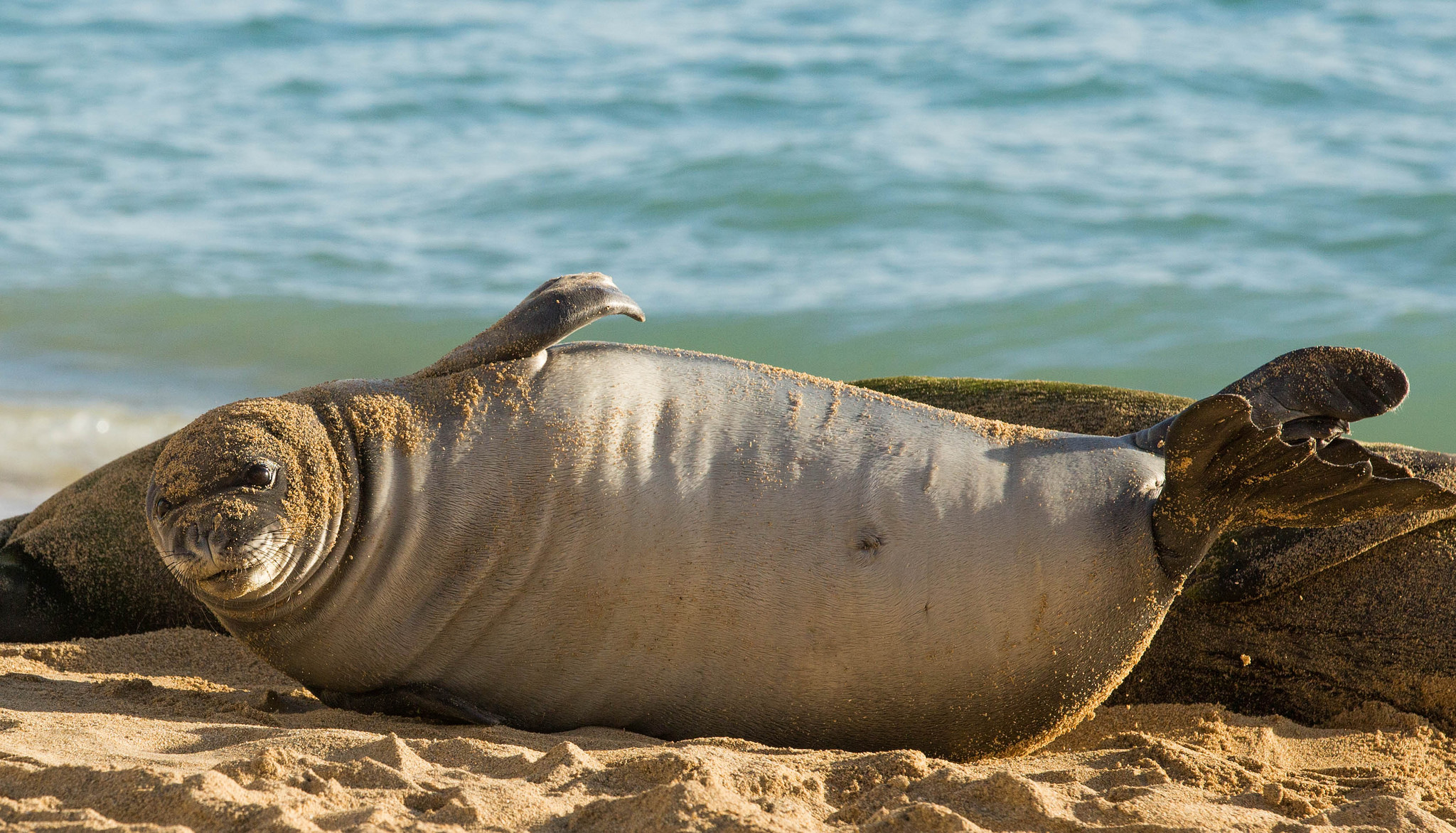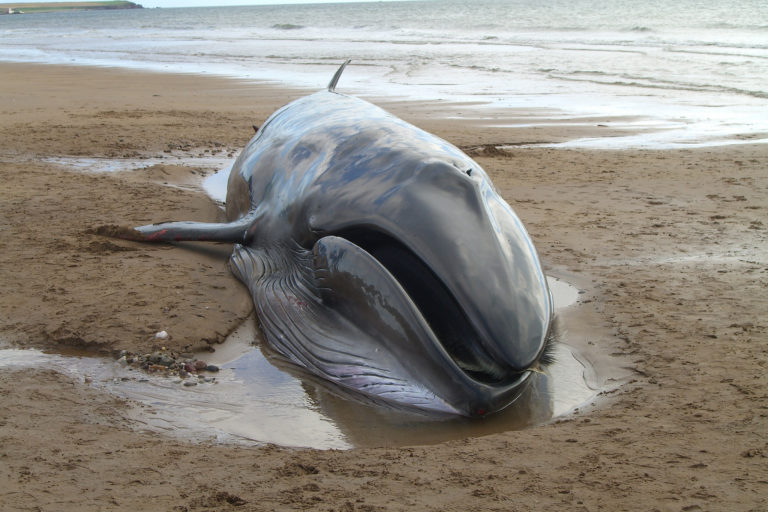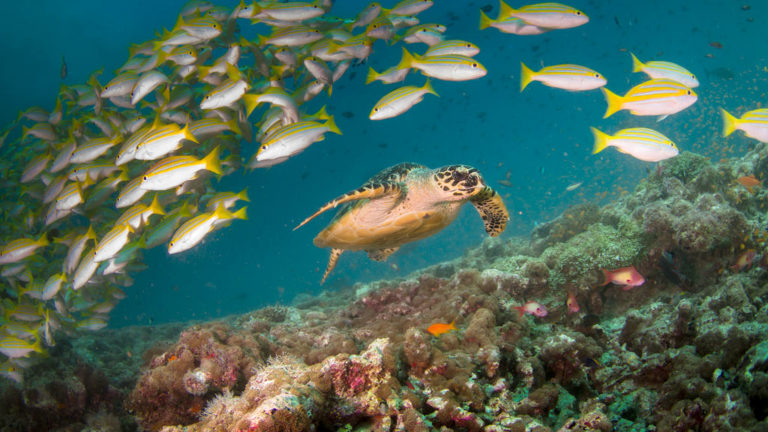This post is part of the Endangered Marine Mammals Series.
On May 25th of this year, Ha`aheo returned to the sea. After diving in, she whimsically explored her old home; blowing bubbles, digging in the sand, splashing about. Her friend, Mea Ola, was not far behind her. They met in the water, touched noses, and began happily rolling around together.
Ha`aheo and Mea Ola are Hawaiian monk seals, just returned safely to the sea after an extended 9-month stay at the Marine Mammal Center’s rehabilitation facility at Kilua-Kona on Hawai’i Island. Mea Ola, a 5-year-old female seal, is the oldest monk seal the Center has rehabilitated. The Marine Mammal Center’s hospital and education center opened its doors in 2014. Named Ke Kai Ola–“The Healing Sea” in Hawaiian– the facility is dedicated to rehabilitating and releasing injured, ill, or orphaned Hawaiian monk seals. Since then, the Center has worked with a well-trained volunteer stranding network, a science-based rehabilitation program, and local community connections to rehabilitate and release 20 healthy Monk Seals back into the wild.
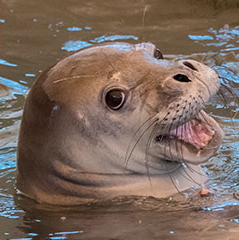

Replacing Ha’aheo and Mea Ola are two of the newest residents, Awa`puhi (a female pup) and Mililani (a 3-year-old female). Both are severely undernourished; Awa`puhi weaned too early and almost certainly would not have made it on her own in the wild, and the outlines of Mililani’s ribs and shoulder blades are visible beneath her gray skin. The good news is both are well on the road to recovery with the help of a few fish smoothies and some deworming treatments.
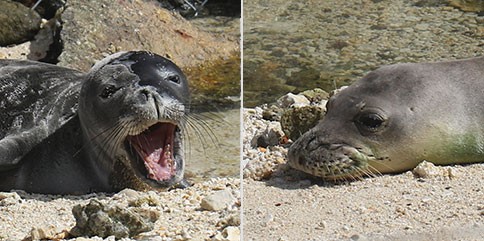
Hawaiian monk seals are among the most endangered marine mammals in the world. Native only to Hawaii, their numbers dwindle with around 1,400 seals remaining in the wild. Despite a multitude of protections, their numbers have continued to fall over the past six decades, showing only a slight, but steady 3% annual population increase in the last three years.
As with any endangered species, they face a host of threats, both natural and anthropogenic. The seals’ manmade threats include habitat loss, human disturbance and injury, intentional killing, and—possibly the most severe effect—entanglement. Hawaiian monk seals have one of the highest rates of entanglement with fishing gear and marine debris of any pinniped (seal and sea lion) species. Threats from the natural world come in the form of lack of food, predation by sharks, infectious disease, and the oddly significant effect of male seal aggression towards female and juvenile seals.
While the list of threats to monk seals may seem overwhelming, organizations that champion the health of marine mammals have met these threats with many creative solutions. Did you know NOAA (The National Oceanic and Atmospheric Administration) and its partners have declared 2017 the “Year of the Monk Seal”? This year marks the 10th anniversary of the “Recovery Plan for the Hawaiian Monk Seal,” and showcases a campaign of “recovery actions, cutting-edge research, and public events” aimed at raising public awareness and support for the Hawaiian monk seal’s recovery. One such effort you can take part in is the Hawaiian Monk Seal Photo Contest. While the contest closed to new submissions last month, public voting for the winner will open soon.
As things start to look up for the Hawaiian monk seal, funding and public support for recovery efforts become more important than ever. The numbers of these playful pinnipeds may be on the rise thanks to the many efforts of non-profits, government agencies, and citizens themselves, but the Hawaiian monk seal isn’t out of the woods just yet. The Year of the Monk Seal is nearly over, but sustained research, funding, and public support for the Hawaiian monk seal’s recovery in every year to come will be what brings this marine mammal back from the brink.
For sources used in this blog and additional resources on this topic, please see the Resources page.
Photos in this post come from the Ke Kai Ola and Marine Mammal Center websites. Photos are taken under NOAA permit #18786. The featured photo at the top of this post is by Anthony Quitano via flickr.com.

